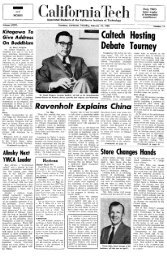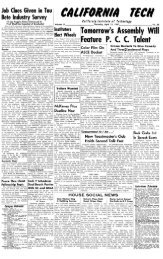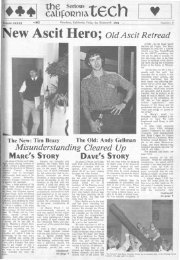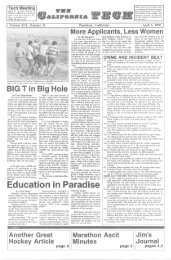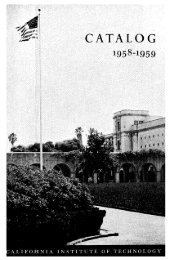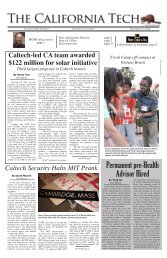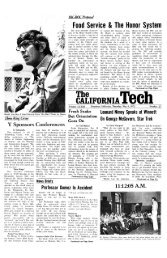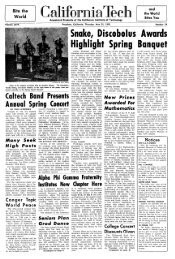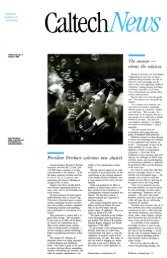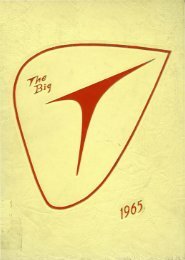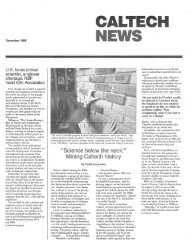PDF (1941) - CaltechCampusPubs
PDF (1941) - CaltechCampusPubs
PDF (1941) - CaltechCampusPubs
You also want an ePaper? Increase the reach of your titles
YUMPU automatically turns print PDFs into web optimized ePapers that Google loves.
256<br />
CALIFORNIA INSTITUTE OF TECHNOLOGY<br />
by the following partial list of topics studied: plant location, types of factory<br />
buildings, plant layout, simplification and standardization of products, time and<br />
motion studies, the production budget, production control, cost control, wage systems,<br />
and industrial relations.<br />
Several field trips are made to enable students to see industrial management techniques<br />
in operation.<br />
Text: Introduction to Industrial Management, Folts.<br />
Instructor: Gilbert.<br />
FIFTH-YEAR AND ADVANCED SUBJECTS<br />
Ec. 100 a, b, c. Business Economics. 12 units (4-0-8); first, second, and<br />
third terms. Open to graduate students.<br />
This subject endeavors to bridge the gap between engineering and business. It<br />
is intended for students in applied science and technology who wish to use their<br />
technical training as an approach to the administrative side of business and industry.<br />
The subject includes, in brief (a) a description of business and industry, and<br />
(b) a consideration of principles of business economics which are relevant to the<br />
fields of interest of engineers and applied scientists. The principal subjects treated<br />
are (1) business organization, (2) industrial promotion and finance, (3) factory<br />
problems, and (4) the marketing of industrial goods. An introduction is given to<br />
industrial statistics and accounting. Students are made familiar with the operations<br />
of the Federal Reserve system and with various other significant subjects in business<br />
economics. Several industries are studied in detail as to the nature of their particular<br />
economic problems and as to the actual companies operating in them. The case<br />
method of instruction developed by the Harvard Graduate Business School is<br />
employed to a considerable extent throughout the subject.<br />
Texts: Fh,ancial Policy of Corporations, Dewing; Management of an Enterprise,<br />
Balderston, Karabasz, and Brecht; Fundamentals of Industrial Marketing, Elder.<br />
Instructors: Fogg, Gray.<br />
Ec. 106. Business Economics Seminar. 3 units; second and third terms.<br />
Open to graduate students. Not offered in 1940-41.<br />
Special studies of current economic problems are presented by the instructor,<br />
after which an open discussion is held. Emphasis is placed on the materials of<br />
economic science, i.e., statistics of production, consumption, prices, banking and<br />
finance. etc. These quantitative studies are accompanied, where advisable, by<br />
reference to economic doctrine.<br />
In charge: Gilbert.<br />
Ec. 110. Industrial Relations. 12 units (4-0-8); third term.<br />
Prerequisite: Ec. 100 a, b.<br />
The course will include the study of labor relations, personnel managements, and<br />
labor economics. The seminar method, permitting general participation through<br />
individual investigation and special reports will be largely followed. Training in<br />
research methods and in the use of pamphlet and other material in the Industrial<br />
Relations Library will also be given.<br />
Instructors: Gray, Arthur H. Young.



